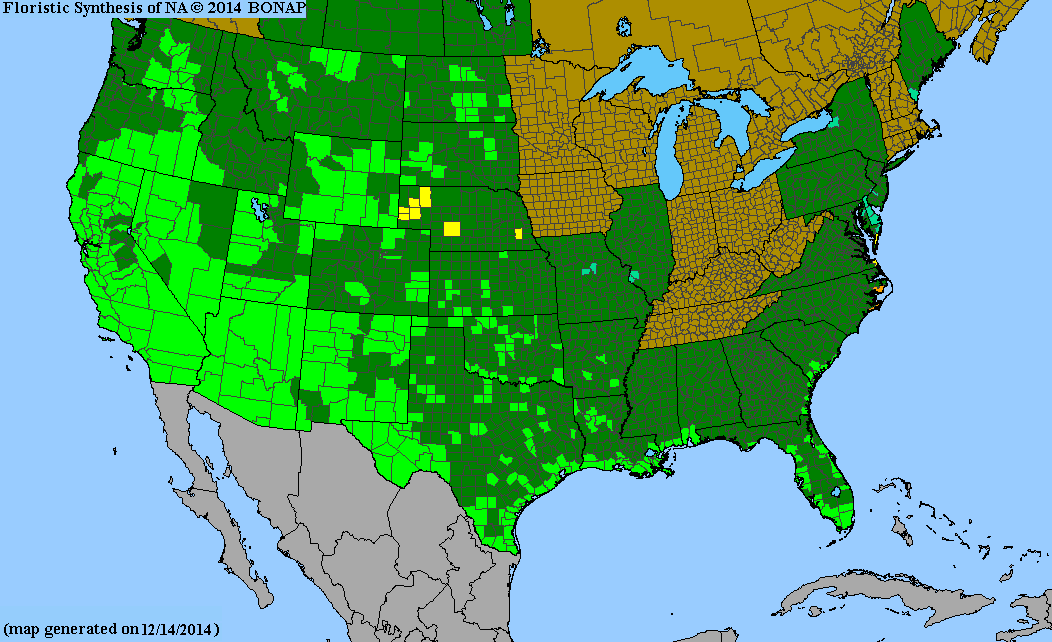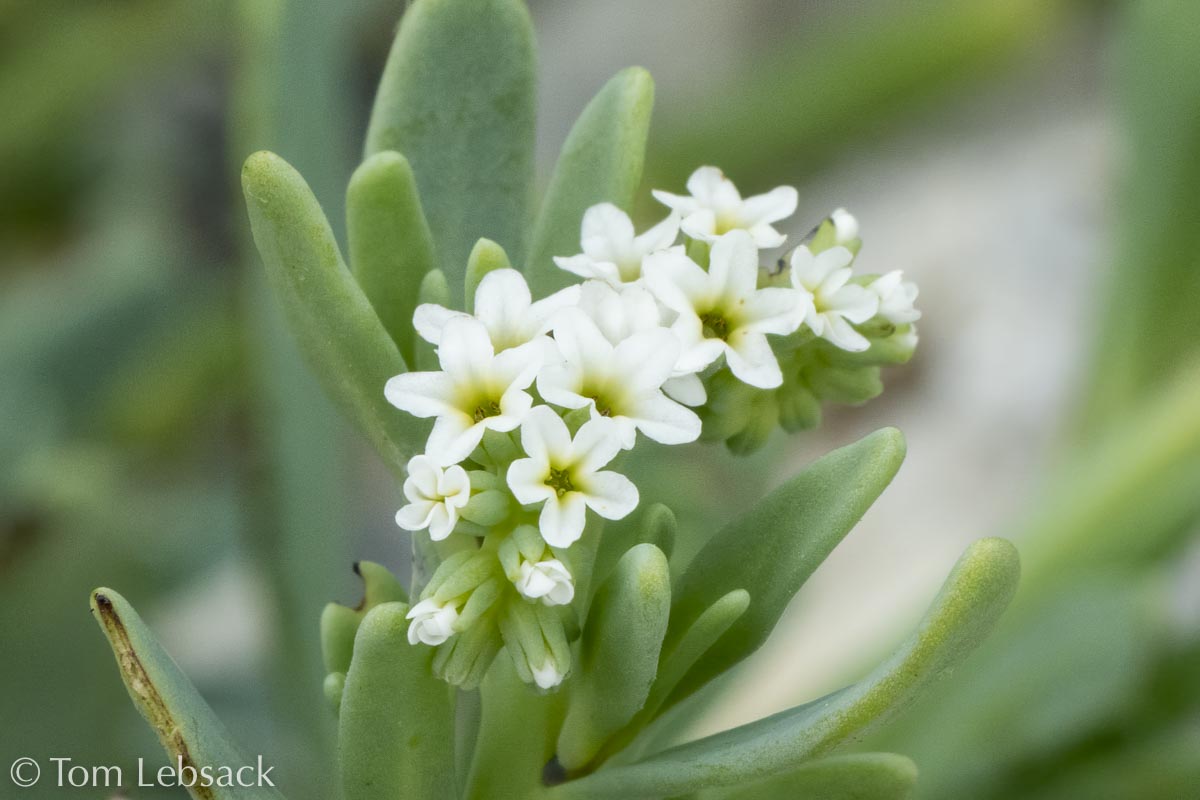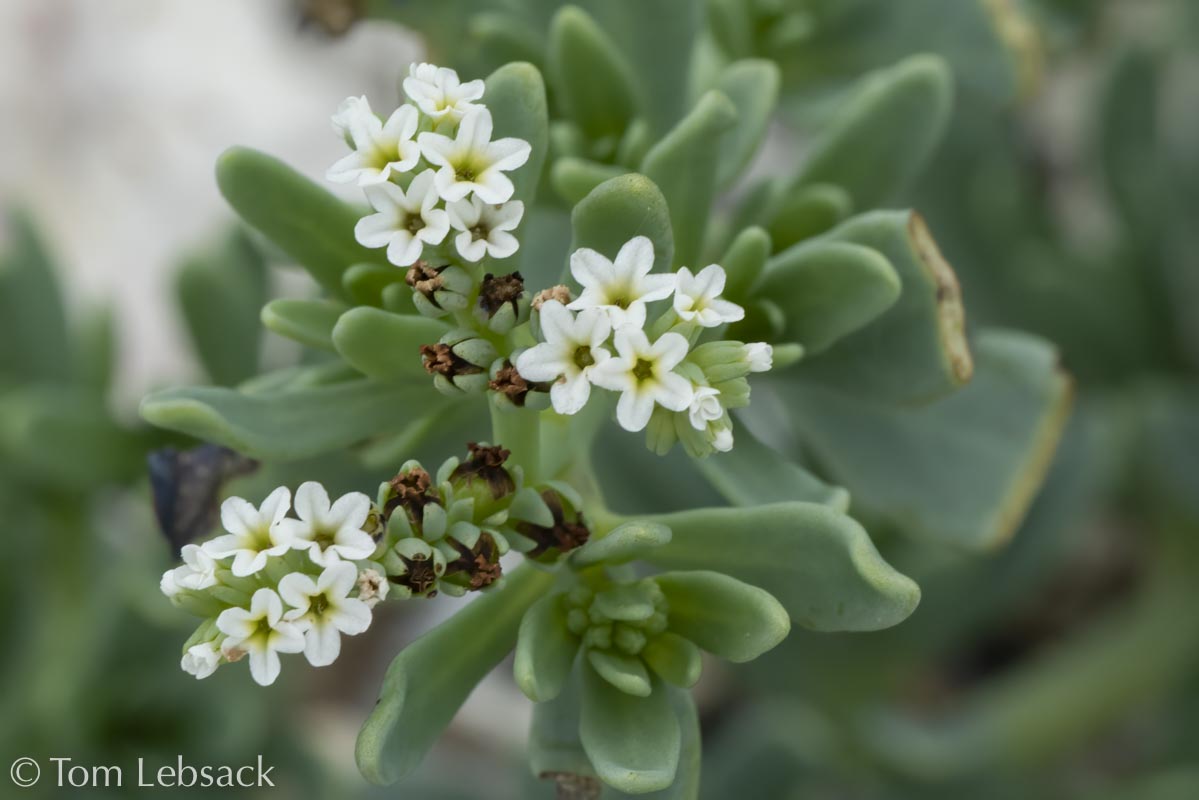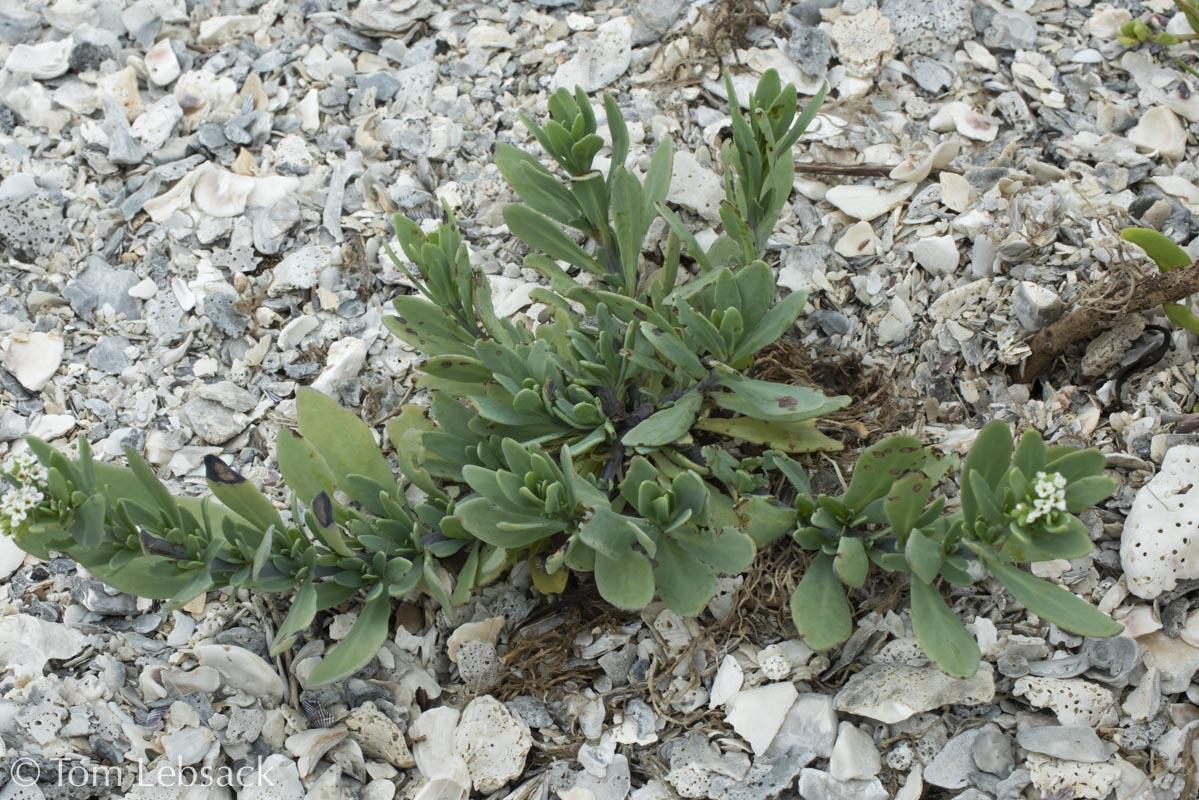Texas Wildbuds
Heliotropium curassavicum
(Salt Heliotrope)
| Scientific Name | Heliotropium curassavicum | USDA PLANTS Symbol | HECU3 |
| Common Name | Seaside Heliotrope, Salt Heliotrope | ITIS Taxonomic Serial No. | 31635 |
| Family | Boraginaceae (Forget-me-not) | SEINet Reference |
Click Here |
| Description | Habitat: Sandy, alkaline or saline soils along beaches, ponds, marshes, dunes and salt flats. Plant: Perennial 4 to 12 inches tall from rhizomes that send up scattered shoots; branching, nearly prostrate stems are fleshy, bluish-green and hairless. Leaves: Fleshy, smooth alternate, lanceolate to oblanceolate or obovate stem leaves 3/4 to 2-3/8 inches long and less than 1/3-inch wide; nearly sessile. Inflorescence: Small flowers in helical spikes, sometimes in clusters of 3 or 4, at branch tips that are tightly curled at the tips early; 5-lobed corollas are funnel-shaped, 1/8 to 1/4-inch wide, white with yellow center that fades and darkens with age. Bloom Period: Most of the year. References: "Manual of the Vascular Plants of Texas" by Correll and Johnston, "Wildflowers of Texas" by Michael Eason and SEINet. |
BONAP Distribution Map Map Color Key |
Texas Status: Native |
Banner photo of Castilleja indivisa and Lupinus ssp. taken along FM 1323 north of Johnson City, Blanco County
© Tom Lebsack 2025
Every attempt is made to provide accurate, up-to-date, and relevant information, but the completeness or accuracy of any information presented on this website cannot be guaranteed. I use authoritative references to insure high standards of accuracy and review and update the information frequently.



